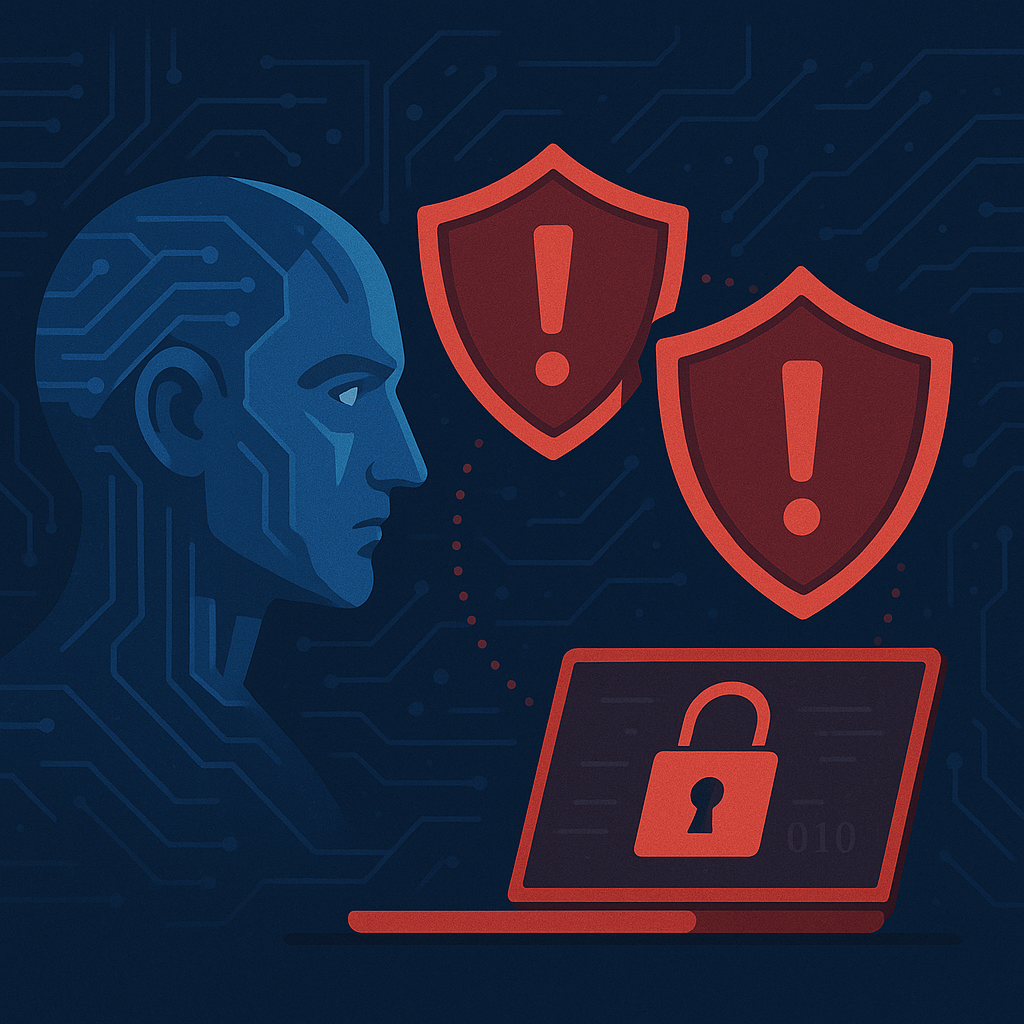Bad actors are increasingly leveraging AI to automate, scale, and refine their attacks. Traditional security tools are struggling to keep pace. A proactive, layered approach that incorporates AI-powered defenses and focuses on robust human expertise is now essential.
The rapid advancement of Artificial Intelligence (AI) is transforming every facet of business, and cybersecurity is no exception. While AI offers incredible opportunities for defense, it’s also becoming a potent weapon in the hands of malicious actors. This isn’t a future concern; we’re seeing AI-enhanced attacks today. This post details the emerging threat landscape, recent events, and critical mitigation strategies for your organization.
The Expanding Attack Surface: How AI is Being Weaponized
The ways in which AI is being deployed offensively are diverse and growing. Key areas of concern include:
- AI-Powered Phishing & Social Engineering: AI can craft hyper-personalized and convincingly realistic phishing emails, social media posts, and voice deepfakes. These attacks bypass traditional signature-based detection and exploit human psychology with alarming effectiveness. Generative AI is automating the creation of these materials at scale, drastically lowering the cost and effort required for successful campaigns.
- Automated Vulnerability Discovery & Exploitation: AI algorithms can scan networks for vulnerabilities far faster and more efficiently than manual methods. More concerning, they can automatically develop and deploy exploits, reducing the window of opportunity for defenders.
- Polymorphic Malware Generation: AI is enabling the creation of malware that constantly changes its signature, making it incredibly difficult for traditional antivirus solutions to detect. This significantly extends the lifespan and reach of malicious code.
- DDoS Amplification & Sophistication: AI can optimize Distributed Denial of Service (DDoS) attacks, identifying weaknesses in target infrastructure and adapting attack vectors in real-time to maximize disruption. It’s not just about volume anymore; AI enables smarter DDoS attacks.
- Credential Stuffing & Account Takeover: AI algorithms can rapidly analyze stolen credentials and identify valid login combinations for various services, facilitating large-scale account takeover attacks.
- Bypassing Security Controls: AI can be used to analyze and bypass WAFs (Web Application Firewalls), intrusion detection systems, and other security measures by identifying patterns and exploiting weaknesses.
Recent Events & Emerging Trends
- The MOVEit Transfer Vulnerability (Summer 2023): While not directly an AI attack, the scale and speed of exploitation following the MOVEit vulnerability highlighted the ability of threat actors to quickly automate attacks against known vulnerabilities. AI tools are likely being used to accelerate this process now.
- Deepfake-Based Business Email Compromise (BEC): Reports are increasing of BEC attacks leveraging audio deepfakes to impersonate executives and authorize fraudulent financial transactions. This is a particularly dangerous trend, as it requires significant social engineering and technical sophistication.
- AI-Generated Malware Variants: Security researchers have demonstrated the ability to use large language models (LLMs) to generate entirely new malware variants, demonstrating the potential for rapid proliferation of malicious code.
- Increased Sophistication of Phishing Kits: The quality and personalization of phishing kits are rapidly increasing thanks to AI, making it harder for users to identify malicious emails.
- Targeted attacks on AI/ML Systems: Bad actors are now attempting to poison training data and other methods to degrade the performance and reliability of an organization’s AI models.
Mitigating the AI-Powered Threat: A Strategic Approach
Addressing this evolving threat requires a multi-layered strategy. Here’s a breakdown of key actions:
- Enhance Threat Intelligence:
- Invest in AI-powered threat intelligence platforms: These platforms can analyze vast amounts of data to identify emerging AI-powered threats and provide early warnings.
- Focus on behavioral analysis: Traditional signature-based detection is becoming less effective. Prioritize security tools that can detect anomalous behavior and identify potential attacks based on patterns.
- Share threat intelligence: Collaborate with industry peers and government agencies to share information about emerging threats and best practices.
- Strengthen Your Defenses:
- Implement Multi-Factor Authentication (MFA): MFA is a critical defense against account takeover attacks, even those leveraging AI.
- Deploy Advanced Email Security: Invest in email security solutions that can detect and block AI-generated phishing emails and social engineering attacks.
- Enhance Endpoint Detection and Response (EDR): EDR solutions can detect and respond to malicious activity on endpoints, even if it bypasses traditional antivirus software.
- Web Application Firewalls (WAFs) with AI capabilities: Utilize WAFs that can learn and adapt to evolving attack patterns.
- Data Loss Prevention (DLP): Implement DLP solutions to protect sensitive data from exfiltration.
- Bolster Human Expertise:
- Invest in Security Awareness Training: Educate employees about the dangers of AI-powered phishing and social engineering attacks. Focus on teaching critical thinking skills and how to identify suspicious emails and messages.
- Upskill Your Security Team: Provide training on AI and machine learning technologies to enable your security team to better understand and respond to AI-powered threats.
- Red Team/Purple Team Exercises: Conduct regular red team/purple team exercises to test your defenses and identify weaknesses. Specifically, simulate AI-powered attacks.
- AI-Powered Security Tools:
- Security Information and Event Management (SIEM) with AI/ML: Use SIEMs that can analyze log data and identify anomalies that may indicate an attack.
- User and Entity Behavior Analytics (UEBA): UEBA solutions can detect anomalous user behavior that may indicate a compromised account or insider threat.
- Automated Threat Hunting: Utilize automated threat hunting tools to proactively search for malicious activity on your network.
Closing Thoughts
The rise of AI-powered attacks is a significant challenge for organizations of all sizes. However, by taking a proactive and layered approach to security, and by investing in the right tools and expertise, you can mitigate the risk and protect your organization from this evolving threat. The key is to embrace AI for defense while remaining vigilant against its use for malicious purposes.

Leave a Reply